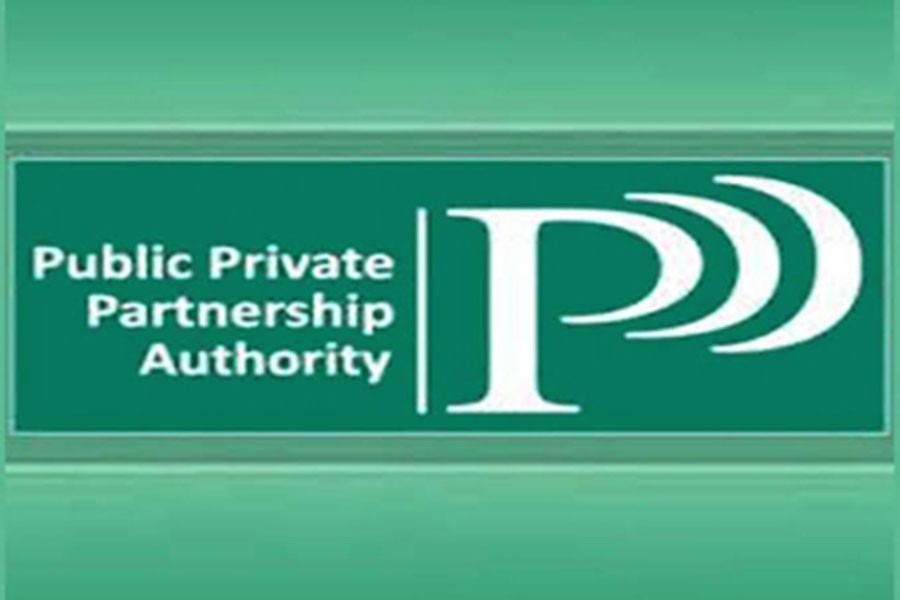
Published :
Updated :

Signing of the memorandum of Understanding (MoU) between the Public Private Partnership (PPP) Authority and 15 banks and financial institutions recently is yet another reminder that things are far from accomplishing what PPP was supposed to do. That is to say, PPP as a mode of project execution under the dual stake of the public and the private sector is still languishing in the absence of appropriate modalities.
The MoU, the second of its kind, following the expiry of the earlier one signed with 14 banks in 2016, is said to better address funding hurdles--- believed to be a major problem in project execution under PPP. Prime Minister's Principal Secretary who was present at the ceremony referred to difficulties which among others included selection of troublesome projects that in many cases hindered progress of PPP projects. The CEO of the PPP Authority made the point more candid saying barriers to PPP financing, particularly a mismatch in loan agreement period between the PPP projects and financial institutions, could not bring success in the MoU signed earlier.
Clearly, it is the lack of proper coordination among the public and private sectors --- unresolved mismatch --- that has stalled the progress of the much hyped PPP scheme. The reason why PPP is believed to have fared well in many countries is primarily because of the efficient management of this dual stake reinforced by the ease in accessing finance and other facilitating services. However, this being rather too sweeping a comment, ground realities are not supposed to be simple and smooth, and are often fraught with difficulties for which mechanisms have to be in place. Countries that have done this have succeeded in making PPP a fine example of project implementation --- in both the advanced and developing countries.
In the South Asian region, India has demonstrated remarkable success in materialising its PPP schemes. Recent studies indicate that India is going to invest close to $400 billion over the next five years in infrastructure development, of which at least 40 per cent would be developed through PPPs. The national road transportation sector has been the front runner in adopting PPPs for India's infrastructure. A survey done sometime ago found that around 70 per cent of all Indian PPP infrastructure projects were in the roads and bridges category.
Typically, PPP is a business venture funded and operated through a partnership of government and one or more private sector companies. Thus PPP involves a contract between a public sector authority and a private party, in which the private party provides a public service and assumes substantial financial, technical and operational risks in the project. In some types of PPPs, the cost of using the service is borne exclusively by the users of the service and not by the taxpayer. In other types, investment is made by the private sector on the basis of a contract with the government to provide agreed services and the cost of providing the service is borne wholly or in part by the government. Government contributions to a PPP may also be in kind (notably through transfer of existing assets). In projects that are aimed at creating public goods as in the infrastructure sector, the government may provide a capital subsidy in the form of a one-time grant, so as to make it more attractive to the private investors. In some other cases, the government may support the project by providing revenue subsidies, including tax breaks or by removing guaranteed annual revenues for a fixed time period.
There are usually two fundamental drivers for PPPs. Firstly, PPPs have to enable the public sector to harness the expertise and efficiencies that the private sector can bring to the delivery of certain facilities and services traditionally procured and delivered by the public sector. Secondly, a PPP is structured in such a way that the public sector agency seeking to make a capital investment does not incur any borrowing. Rather, the PPP borrowing is incurred by the private sector implementing the project.
In Bangladesh, the reasons for lack of enthusiasm, especially from the private sector, to join hands with the government may be many. Dearth of finance is indeed one. There were discussions on this and other issues but none seemed to be inspiring enough to inject vigour into the PPP scheme. Experts have opined that the government could consider floating initial public offerings (IPOs) or special bonds to collect funding for PPP projects because commercial banks tend to shy away from extending long-term loans such projects require.
The suggestion to explore alternative financing opportunities including floating different types of bonds, issuance of initial public offering (IPO) on stock markets to meet the financing gaps for PPP projects sounds good. The government may consider this in right earnest. Besides, development projects which are commercially viable should be implemented through PPP programme. The importance of economic and commercial benefits should also be assessed carefully before taking any project under the scheme to attract investors.
Evidences from developing countries indicate that actual or perceived rise in tariffs, macroeconomic fluctuations in currency or purchasing power, inadequate regulatory and institutional environments, methodology of profit sharing, political reneging etc are some of the key challenges that often create serious obstacles to the functioning of PPP projects. It is high time the government took a close look at the impeding elements and also considered setting up a state window to facilitate funding of PPP projects.


 For all latest news, follow The Financial Express Google News channel.
For all latest news, follow The Financial Express Google News channel.